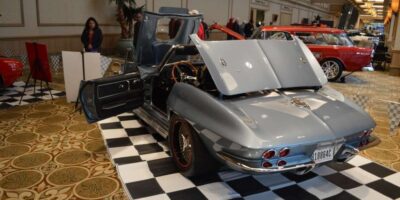Exploring the Subaru Van: A Comprehensive Guide
The Subaru van, often overshadowed by the company’s more famous models, holds a special place in automotive history. Known for their reliability and efficiency, these vans served various purposes over the years, from family transport to commercial use. Let’s delve into the heritage, features, and significance of the Subaru van.
History of the Subaru Van
Subaru, a division of the large Japanese conglomerate Fuji Heavy Industries, started producing vehicles in the late 1950s. The first Subaru van, known as the Subaru 360 van, debuted in the 1960s. This lightweight microvan became popular in Japan for its practicality and affordability. In the years following, Subaru expanded its van lineup to meet evolving consumer demands.
Subaru Sambar
The Subaru Sambar, introduced in 1961, became a landmark in the brand’s lineup. As a Kei van, it complied with Japan’s regulations on small vehicles. With its compact size and efficient engine, it appealed to both private and business customers. Over the years, Subaru updated the Sambar with modern features while keeping the core attributes intact.
Subaru Domingo
The Subaru Domingo appeared in the mid-1980s as a more spacious alternative. It offered increased cargo space and optional four-wheel drive. The three-cylinder engine provided enough power for urban and rural driving. Though it never achieved the fame of Subaru’s other models, the Domingo established itself as a dependable workhorse.
Features and Variants
Subaru vans come with various features designed to enhance functionality and comfort. Let’s look at some of the key aspects:
Engine and Performance
Both the Sambar and Domingo often featured small, efficient engines. Early models came with air-cooled two-stroke engines, while later versions transitioned to four-stroke water-cooled engines. The Sambar’s engine was typically mounted under the cargo bed, maximizing interior space.
The Domingo offered more power, boasting a 1.0L or 1.2L engine. The option for four-wheel drive in both models allowed for versatility in different driving conditions. Despite their modest power, these vans excelled in fuel efficiency.
Interior Design
Interior configurations varied to accommodate diverse needs. Early Sambar models were minimalistic, with basic seating and cargo areas. Over time, Subaru introduced more comfortable seating, better materials, and additional features like air conditioning and infotainment systems.
The Domingo, designed with passenger comfort in mind, provided more spacious seating and flexible arrangements. Foldable seats enabled increased cargo capacity when needed. The focus was on practicality and adaptability.
Modern iterations of these vans include power windows, advanced audio systems, and improved safety features. Subaru aimed to keep up with technological advancements while retaining the vans’ core strengths.
Exterior and Dimensions
Subaru vans are known for their unique and functional designs. The Sambar maintained a boxy, compact shape, making it ideal for navigating narrow city streets. Small dimensions meant easy parking and maneuverability.
The Domingo, although slightly larger, kept a similar practical design. It balanced the need for more interior space with efficient use of external dimensions. The design changes over the years included more aerodynamic shapes and modern aesthetics.
Usage and Market Adaptation
The adaptability of Subaru vans has made them popular in various markets. They serve well in both urban and rural environments. Here are some common uses:
- Commercial Use: Businesses often use Subaru vans for deliveries and transportation. Their compact size and excellent fuel efficiency make them cost-effective options for small businesses.
- Family Transport: Families appreciate these vehicles for their reliability and space. The adaptable seating arrangements cater to both daily commutes and long-distance travel.
- Recreational Use: Enthusiasts convert these vans into campers and mobile workstations. Their simplicity and ease of modification make them favorites in the DIY community.
Cultural Impact and Legacy
Subaru vans have had a lasting impact on automotive culture, particularly in Japan. The kei car culture, which values small and efficient vehicles, holds a special place for models like the Sambar. These vans symbolize practicality and innovation.
In export markets, the influence is subtler but noticeable. Enthusiasts of unique and vintage cars often seek out older Subaru vans for restoration projects. Their reliability and charm appeal to collectors and fans of Japanese automotive history.
Modern Perspectives
Today, Subaru no longer produces the classic Sambar and Domingo. However, they remain in circulation thanks to their durability. Modern automakers, including Subaru, have transitioned towards more advanced models and electric vehicles. Nonetheless, the legacy of these vans continues, inspiring new designs and maintaining a loyal following.
In contemporary usage, owners often join clubs and online forums to share tips, modifications, and experiences. These communities keep the spirit of Subaru vans alive, celebrating their historical significance and continued utility.
“`
